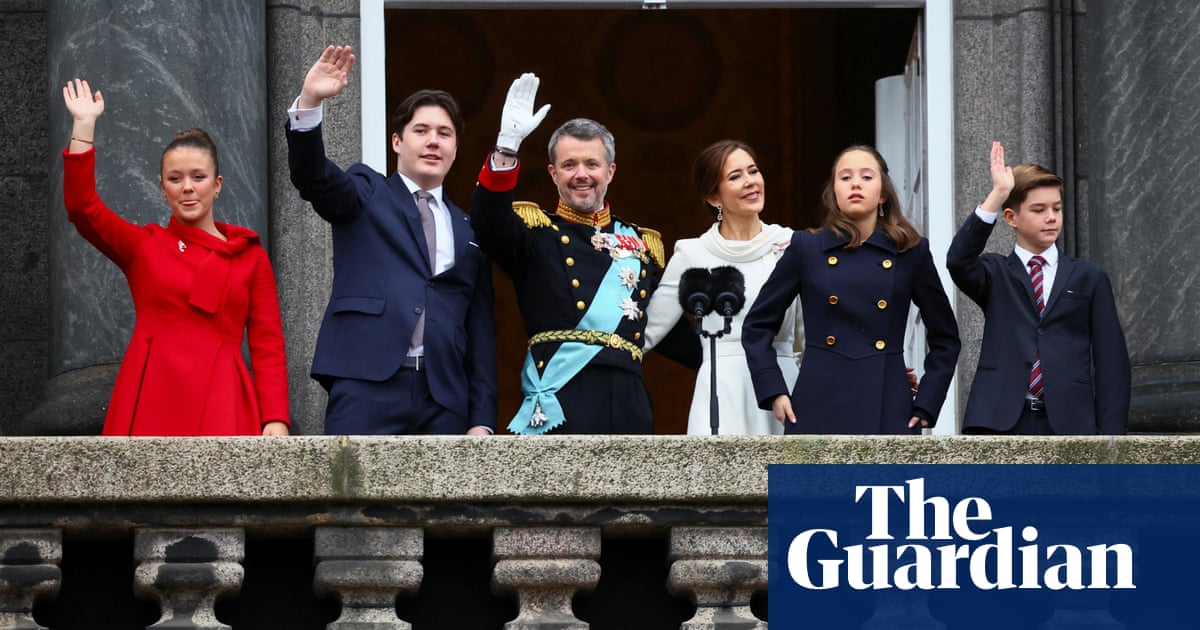
Denmark entered a new era as King Frederik X assumed the throne following the shock abdication of his mother Queen Margrethe II.
For many in Denmark, Margrethe was the only monarch they had ever known. But her abdication, after more than five decades on the throne, paved the way for her son, the former Crown Prince Frederik, to succeed her.
The handover took place at a Cabinet meeting at Christiansborg Palace in the capital Copenhagen, when Margrethe signed a declaration of her abdication, officially transferring the crown to Frederik, according to the Danish Broadcasting Corporation (DR).
The new king and his Australian-born wife are expected to step out onto the palace’s balcony, joined by the Danish Prime Minister Mette Frederiksen, who will publicly proclaim the King’s accession — a tradition in place since the constitution of 1849.
Thousands have been gathering in the streets of Copenhagen, despite frigid weather, to see the historic moment.
Margrethe, 83, was Europe’s longest-reigning monarch and the world’s last reigning queen. She announced her historic tenure would come to an end after 52 years in a stunning live address on New Year’s Eve.
She said she had been reflecting on “whether now would be an appropriate time to pass on the responsibility to the next generation” following a recent surgery on her back and had come to the decision “that now is the right time.”
Although no longer the ruling monarch, Margrethe will continue to be titled as Her Majesty and can be installed as acting regent, according to the Danish Royal House.
This means that she will be able to perform duties as head of state when both King Frederik or Crown Prince Christian are not able, such as if they were overseas.
Other Danish royals who can also assume the role of acting regent if required include Mary, Frederik’s brother Prince Joachim and his aunt, Princess Benedikte.
While the Danish monarchy is one of the oldest in Europe, stretching back more than 1,000 years, there is no traditional crowning moment.
As such, world leaders and high-profile dignitaries are not expected to be in attendance, with the Danish changeover being a significantly more low-key occasion in comparison to the global spectacle and pageantry of King Charles III’s coronation in May.
Despite this, with recent polls continuing to show strong public support for the monarchy, huge crowds turned out.
Denmark is a constitutional monarchy, and its royals perform an important but symbolic ambassadorial role in addition to signing off any new legislation.
Formal powers lie with the elected parliament and its government based at Christiansborg Palace in the heart of the capital, Copenhagen.
And it was here that King Frederik X visited for the last time as crown prince on Sunday, and departed as the ruling monarch of Denmark, Greenland and the Faroe Islands.
Danish royal author Trine Villemann highlighted that one notable difference in this royal changeover will come during the balcony appearance.
“In Denmark, we proclaim our monarchs. In 1972, the then-PM, Jens Otto Krag, proclaimed ‘The King is dead, long live Queen Margrethe II’ ... There is great curiosity as to what Danish PM Mette Frederiksen will proclaim,” she said.
Meanwhile, Birgitte Borup, culture editor at Danish newspaper Berlingske, told CNN the transition between monarchs will feel “very different” to 1972 “simply because the queen is alive.”
“It’s the first time in 900 years a Danish king or queen has abdicated. It will be a more festive occasion than the last time when a young Margrethe took over,” she explained.
“The queen’s decision to abdicate was shocking but most Danes seem to understand that she wants to pass on the torch due to declining health.”
It’s incredibly rare for a monarch to abdicate in Denmark. The last Danish monarch to do so was King Eric III when in 1146 he relinquished the crown to join a monastery. But the practice is more common in other European royal houses.
Borup said Denmark was “entering a new modern era” and while Frederik has enjoyed broad support from Danes during his time as crown prince, as monarch he will have work to do.
“He might continue making the monarchy more accessible to the people. His main challenge will be maintaining a popular and relevant monarchy in the years to come.”
It’s not just those from the Nordic country celebrating Margrethe handing the baton to her son. King Frederik X is ruling alongside his Australian-born and hugely popular wife, Queen Mary — which will undoubtedly delight her proud admirers back home.
Their royal romance started with a chance encounter at a Sydney bar during the 2000 Olympics Games. Sales executive Mary Elizabeth Donaldson, born in Hobart, Tasmania, was initially unaware she was chatting away with a real-life prince.
Back then, Justin Tynan was the manager of Sydney’s Slip Inn, the venue near Darling Harbour where the future King and Queen of Denmark crossed paths. “I do recollect her, I mean ... she’s quite a striking woman. But the focus, I suppose, was on Frederik because he was the one paying for the drinks!” he told CNN.
The watering hole popular with tourists has over the years continued to celebrate Mary’s milestone moments. It held a live screening of the couple’s grand wedding at Copenhagen cathedral in 2004 and, two years later, marked the birth of their first son, Prince Christian, who is now the new crown prince and heir to the throne.
Meanwhile, the Australian federal government has marked the special occasion with its own unique gift on behalf of the nation.
Prime Minister Anthony Albanese announced a donation of 10,000 Australian dollars (around $6,000) for the protection of one the most well-known but endangered marsupials in Mary’s home state.
“The story of Crown Prince Frederik and Crown Princess Mary of Denmark is one Australians have followed closely and hold dear to their hearts,” he said in a statement on Saturday.
“Crown Princess Mary grew up in Tasmania, and so it is fitting Australia marks this occasion with a gift to support the conservation of the Tasmanian devil.”
Back in Denmark, the royal couple have earned supporters and worked to modernize the monarchy, raising their four children — 18-year-old Christian, 16-year-old Isabella and 13-year-old twins, Vincent and Josephine - with as normal as upbringing as possible and sending them to regular state schools.
The Danish royal family is more informal than their British counterparts. They have been praised for being down-to-earth and can often be seen out and about, shopping, dining or riding bicycles in public like other members of the public.
The climate crisis, sustainability, public health, the rights of women and girls are just some of the themes of Frederik and Mary’s duties that have helped endear them to the public.
Borup said that Mary might not have been born a royal, “but you’d think she was.”
“She carries herself with such grace and is an amazing representative for the nation of Denmark,” the Berlingske culture editor said. “She’s known to always be well prepared, and she’s taken on some pretty substantial tasks, such as shining a light on domestic violence.
“When Mary and Frederik met in Australia, the story used to be that she was lucky to run into a fairytale prince. I think time has shown he was even luckier.” — CNN










